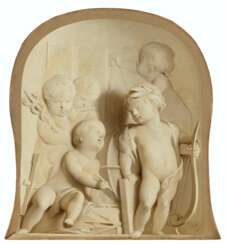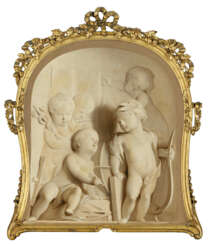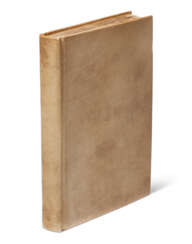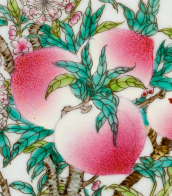jacob de wit

Jacob de Wit was a Dutch painter, decorator and collector, a member of the Guild of St. Luke in Antwerp.
De Wit studied at the Royal Academy in Antwerp, where he began to study the work of Peter Paul Rubens and became his follower. De Wit made copies of many of Rubens' works, notably his ceiling paintings in the Jesuit church in Antwerp.
Later, from the 1720s Jacob de Wit began working in Amsterdam, where he received regular commissions, both public and private. He created many ceiling and wall paintings in the Rococo style, in which he used grisaille - gray and white painting, creating the illusion of three-dimensionality, or bas-relief. Some of them can still be seen in their original places in the 21st century.
Jacob de Wit amassed a large art collection during his lifetime, including works by Rubens, Antoni van Dyck, as well as Dutch and Flemish contemporaries and old masters.


Jacob de Wit was a Dutch painter, decorator and collector, a member of the Guild of St. Luke in Antwerp.
De Wit studied at the Royal Academy in Antwerp, where he began to study the work of Peter Paul Rubens and became his follower. De Wit made copies of many of Rubens' works, notably his ceiling paintings in the Jesuit church in Antwerp.
Later, from the 1720s Jacob de Wit began working in Amsterdam, where he received regular commissions, both public and private. He created many ceiling and wall paintings in the Rococo style, in which he used grisaille - gray and white painting, creating the illusion of three-dimensionality, or bas-relief. Some of them can still be seen in their original places in the 21st century.
Jacob de Wit amassed a large art collection during his lifetime, including works by Rubens, Antoni van Dyck, as well as Dutch and Flemish contemporaries and old masters.
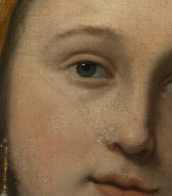

Jacob de Wit was a Dutch painter, decorator and collector, a member of the Guild of St. Luke in Antwerp.
De Wit studied at the Royal Academy in Antwerp, where he began to study the work of Peter Paul Rubens and became his follower. De Wit made copies of many of Rubens' works, notably his ceiling paintings in the Jesuit church in Antwerp.
Later, from the 1720s Jacob de Wit began working in Amsterdam, where he received regular commissions, both public and private. He created many ceiling and wall paintings in the Rococo style, in which he used grisaille - gray and white painting, creating the illusion of three-dimensionality, or bas-relief. Some of them can still be seen in their original places in the 21st century.
Jacob de Wit amassed a large art collection during his lifetime, including works by Rubens, Antoni van Dyck, as well as Dutch and Flemish contemporaries and old masters.


Jacob de Wit was a Dutch painter, decorator and collector, a member of the Guild of St. Luke in Antwerp.
De Wit studied at the Royal Academy in Antwerp, where he began to study the work of Peter Paul Rubens and became his follower. De Wit made copies of many of Rubens' works, notably his ceiling paintings in the Jesuit church in Antwerp.
Later, from the 1720s Jacob de Wit began working in Amsterdam, where he received regular commissions, both public and private. He created many ceiling and wall paintings in the Rococo style, in which he used grisaille - gray and white painting, creating the illusion of three-dimensionality, or bas-relief. Some of them can still be seen in their original places in the 21st century.
Jacob de Wit amassed a large art collection during his lifetime, including works by Rubens, Antoni van Dyck, as well as Dutch and Flemish contemporaries and old masters.


Jacob de Wit was a Dutch painter, decorator and collector, a member of the Guild of St. Luke in Antwerp.
De Wit studied at the Royal Academy in Antwerp, where he began to study the work of Peter Paul Rubens and became his follower. De Wit made copies of many of Rubens' works, notably his ceiling paintings in the Jesuit church in Antwerp.
Later, from the 1720s Jacob de Wit began working in Amsterdam, where he received regular commissions, both public and private. He created many ceiling and wall paintings in the Rococo style, in which he used grisaille - gray and white painting, creating the illusion of three-dimensionality, or bas-relief. Some of them can still be seen in their original places in the 21st century.
Jacob de Wit amassed a large art collection during his lifetime, including works by Rubens, Antoni van Dyck, as well as Dutch and Flemish contemporaries and old masters.


Jacob de Wit was a Dutch painter, decorator and collector, a member of the Guild of St. Luke in Antwerp.
De Wit studied at the Royal Academy in Antwerp, where he began to study the work of Peter Paul Rubens and became his follower. De Wit made copies of many of Rubens' works, notably his ceiling paintings in the Jesuit church in Antwerp.
Later, from the 1720s Jacob de Wit began working in Amsterdam, where he received regular commissions, both public and private. He created many ceiling and wall paintings in the Rococo style, in which he used grisaille - gray and white painting, creating the illusion of three-dimensionality, or bas-relief. Some of them can still be seen in their original places in the 21st century.
Jacob de Wit amassed a large art collection during his lifetime, including works by Rubens, Antoni van Dyck, as well as Dutch and Flemish contemporaries and old masters.


Jacob de Wit was a Dutch painter, decorator and collector, a member of the Guild of St. Luke in Antwerp.
De Wit studied at the Royal Academy in Antwerp, where he began to study the work of Peter Paul Rubens and became his follower. De Wit made copies of many of Rubens' works, notably his ceiling paintings in the Jesuit church in Antwerp.
Later, from the 1720s Jacob de Wit began working in Amsterdam, where he received regular commissions, both public and private. He created many ceiling and wall paintings in the Rococo style, in which he used grisaille - gray and white painting, creating the illusion of three-dimensionality, or bas-relief. Some of them can still be seen in their original places in the 21st century.
Jacob de Wit amassed a large art collection during his lifetime, including works by Rubens, Antoni van Dyck, as well as Dutch and Flemish contemporaries and old masters.


Jacob de Wit was a Dutch painter, decorator and collector, a member of the Guild of St. Luke in Antwerp.
De Wit studied at the Royal Academy in Antwerp, where he began to study the work of Peter Paul Rubens and became his follower. De Wit made copies of many of Rubens' works, notably his ceiling paintings in the Jesuit church in Antwerp.
Later, from the 1720s Jacob de Wit began working in Amsterdam, where he received regular commissions, both public and private. He created many ceiling and wall paintings in the Rococo style, in which he used grisaille - gray and white painting, creating the illusion of three-dimensionality, or bas-relief. Some of them can still be seen in their original places in the 21st century.
Jacob de Wit amassed a large art collection during his lifetime, including works by Rubens, Antoni van Dyck, as well as Dutch and Flemish contemporaries and old masters.

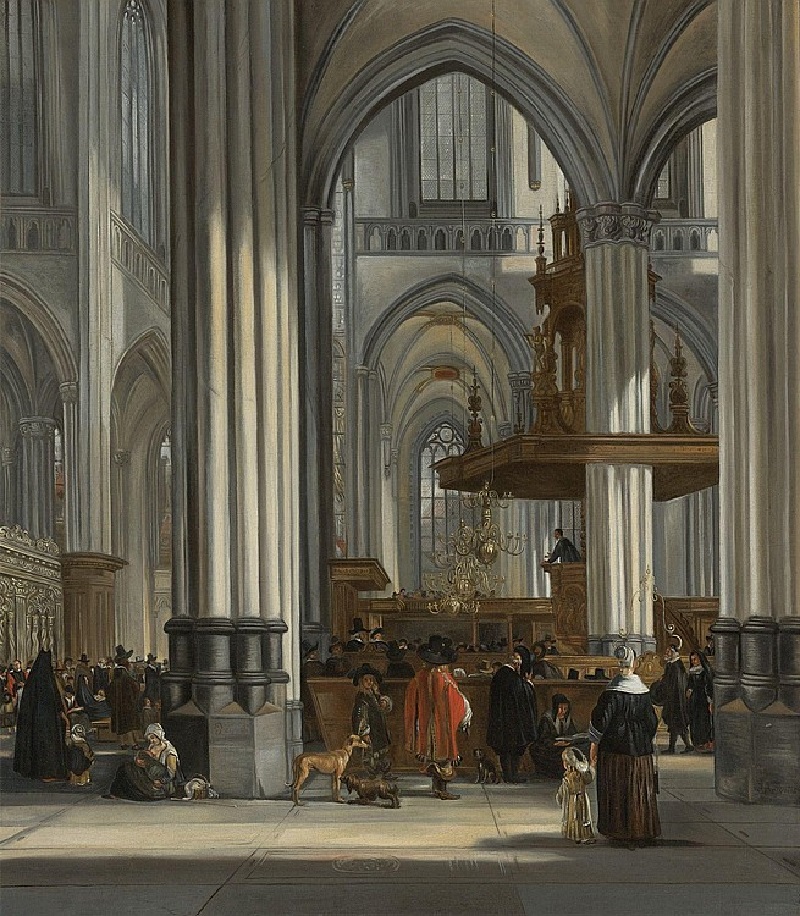
Emanuel de Witte was a Dutch perspective painter. In contrast to Pieter Jansz Saenredam, who emphasized architectural accuracy, De Witte was more concerned with the atmosphere of his interiors. Though few in number, de Witte also produced genre paintings.
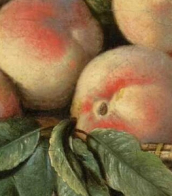

Jacob de Backer was a Flemish painter.
He is known to have worked in Antwerp between about 1571 and 1585 and was a very prolific painter. Many paintings and altarpieces in Antwerp and Italy are signed with his name. Bakker also created many elaborate compositions on allegorical subjects.


Simon de Vlieger was a maritime painter of the Golden Age of Dutch painting. He is best known for his paintings depicting the naval fleet of the Republic of the United Provinces of Holland. He painted ships in port, on the high seas, during storms, or shipwreck scenes. Flieger also made tapestries, engravings, and stained-glass windows for the Nieuwe Kerk in Amsterdam.




Jacob Adriaensz Backer was a prolific artist of the Dutch Golden Age, known for his dynamic portraits, religious subjects, and mythological scenes. Over a span of twenty years, Backer produced approximately 140 paintings, standing out for his quick execution and attention to detail. His ability to capture intricate details like cuffs, fur, and collars within a short period was renowned, exemplifying the Dutch wet-on-wet painting technique's success during his era.
Influenced by notable figures such as Wybrand de Geest, Peter Paul Rubens, and Abraham Bloemaert, Backer was also celebrated for his drawings of nudes, showcasing his versatile skill set. His works were a testament to the baroque movement, characterized by vivid expression and intricate detail. Notable among his works are portraits that convey the subject's essence with exceptional clarity and depth, earning him a distinguished place among his contemporaries in Amsterdam.
Despite his significant contributions to Dutch art, Backer led a life focused solely on his art, never marrying or purchasing a home, possibly sharing his living quarters with relatives. He was deeply embedded in the artistic milieu of Amsterdam, having been one of the most independent pupils of Rembrandt between 1632 and 1634, absorbing and reflecting the master's style in his works.
For collectors and experts in art and antiques, Jacob Adriaensz Backer's work offers an insight into the Dutch Golden Age's rich cultural and artistic landscape. His legacy continues to be celebrated in major museums and collections worldwide, including the Rijksmuseum in Amsterdam and the National Museum in Warsaw, where his influence on portrait and genre painting remains undisputed.
To stay updated on exhibitions, sales, and auctions related to Jacob Adriaensz Backer, subscribing to newsletters from reputable art galleries and auction houses is advisable. This ensures you receive timely information on opportunities to engage with the works of this masterful Dutch Golden Age painter.










